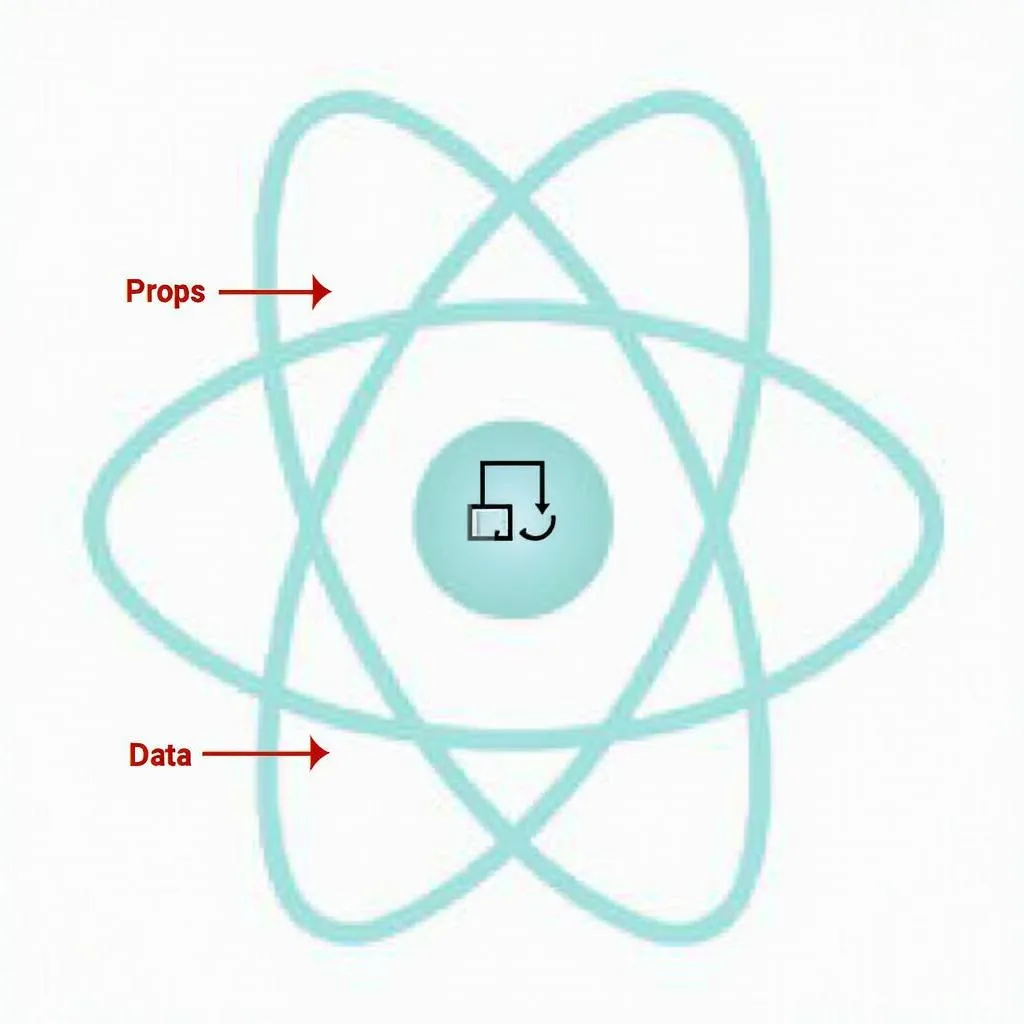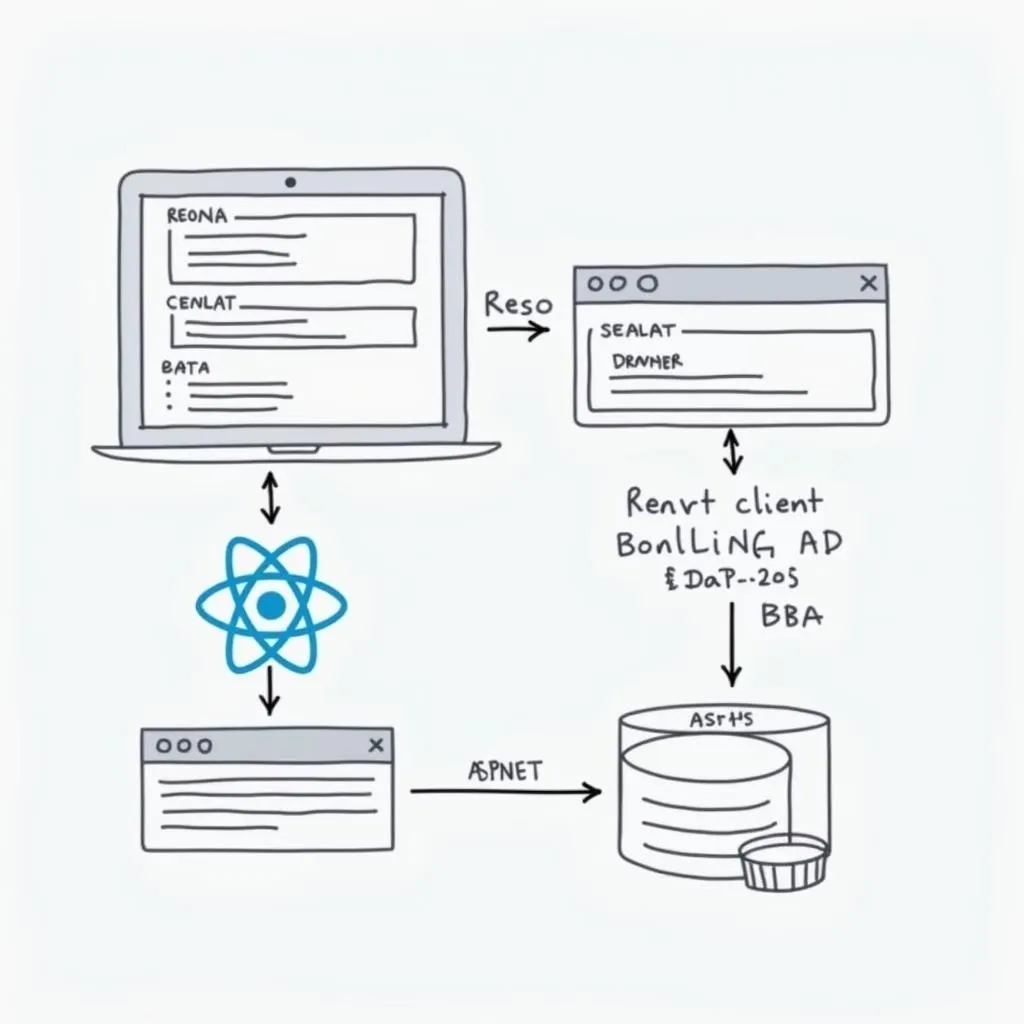The world of web development is constantly evolving, with Single Page Applications (SPAs) taking center stage for their seamless user experiences and dynamic interfaces. Powering these sophisticated applications are robust technologies like ASP.NET and ReactJS, each bringing unique strengths to the table. This article explores the individual capabilities of these technologies and dives into how their combined power unlocks new dimensions in SPA development.
 ASP.NET architecture
ASP.NET architecture
Understanding the Power of ASP.NET
ASP.NET, developed by Microsoft, is a free and open-source server-side web application framework designed for building dynamic web pages. It provides a comprehensive programming model, a rich set of libraries, and a robust runtime environment for creating scalable and secure web applications. ASP.NET supports multiple programming languages, including C# and VB.NET, making it a versatile choice for developers.
One of ASP.NET’s key strengths lies in its ability to build powerful APIs (Application Programming Interfaces). APIs serve as the backbone of SPAs, enabling communication between the front-end and the server to deliver dynamic content and functionality.
Exploring the Flexibility of ReactJS
On the front-end, ReactJS, a JavaScript library developed by Facebook, takes the reins. ReactJS is renowned for its component-based architecture, allowing developers to break down complex user interfaces into smaller, reusable units. This modular approach not only simplifies development but also enhances code maintainability and reusability.
 ReactJS component structure
ReactJS component structure
ReactJS excels at building interactive and dynamic user interfaces, making it a perfect fit for the front-end of SPAs. Its virtual DOM (Document Object Model) efficiently updates only the necessary parts of the webpage, resulting in lightning-fast performance and a smooth user experience.
The Synergistic Power of ASP.NET and ReactJS
While ASP.NET and ReactJS are powerful on their own, their true potential is unleashed when combined. ASP.NET Core, the latest iteration of ASP.NET, provides a streamlined and highly performant framework for building RESTful APIs, the preferred communication method for modern SPAs. ReactJS seamlessly integrates with these APIs, fetching data and dynamically updating the user interface without requiring full page reloads.
This powerful synergy results in SPAs that are:
- Fast and Responsive: Data is fetched asynchronously and updates are delivered efficiently, creating a smooth and enjoyable user experience.
- Scalable and Maintainable: The decoupled architecture, with a clear separation between the front-end and back-end, simplifies development and makes the application easier to scale and maintain.
- SEO-Friendly: Server-side rendering capabilities offered by ASP.NET Core address the SEO limitations traditionally associated with SPAs, ensuring that search engines can easily crawl and index the application’s content.
Building a Modern SPA with ASP.NET and ReactJS
The process of building a modern SPA with ASP.NET and ReactJS generally involves the following steps:
- Setting up the ASP.NET Core Project: Creating a new ASP.NET Core project configured to build a RESTful API that will serve as the backend for the SPA.
- Defining the API Endpoints: Designing and implementing the API endpoints that will handle data interactions between the front-end and the database.
- Creating the ReactJS Project: Setting up a new ReactJS project using a tool like Create React App, which provides a pre-configured development environment.
- Building the User Interface: Developing the user interface components using ReactJS, leveraging its component-based architecture for modularity and reusability.
- Connecting ReactJS to the ASP.NET Core API: Implementing the logic in ReactJS components to fetch data from the ASP.NET Core API and dynamically update the UI.
 SPA data flow using ASP.NET and ReactJS
SPA data flow using ASP.NET and ReactJS
Conclusion
The combination of ASP.NET and ReactJS presents a compelling solution for building modern, dynamic, and high-performing SPAs. By leveraging the strengths of each technology, developers can create web applications that deliver exceptional user experiences, are easy to maintain, and can be scaled to meet future demands. As the demand for sophisticated web applications continues to grow, the synergy between ASP.NET and ReactJS will undoubtedly remain a driving force in shaping the future of web development.